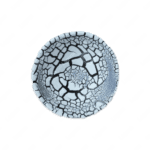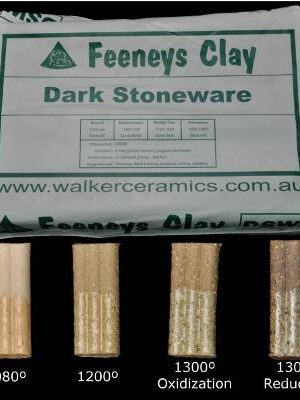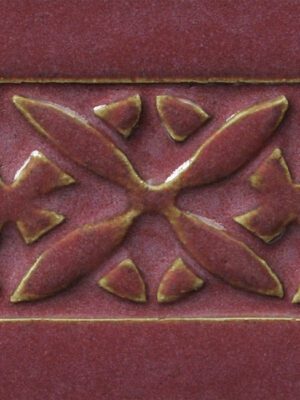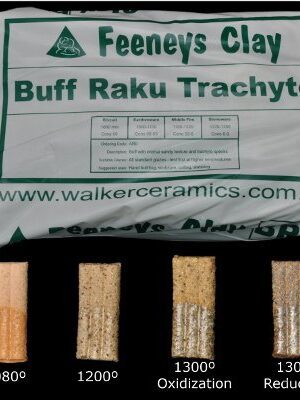Laguna Dry Lakes Crackle Brushable Glaze Fossil White 472ml
Product Details
This unique texture and pattern producing Laguna Dry Lakes Crackle Brushable Glazes were inspired by National Parks in North America.
Dry Lake Glaze works with most clay bodies and has been formulated to adhere securely without flaking away.
The glaze can be applied to green-ware or bisque ware. For best results brush on generously.
Best suited for sculptural work. Laguna recommends testing glazes on test tile with your clay body before use in art or production.
Images of colours may differ from actual colours due to firing and application.
Guidelines for Using Laguna Glazes
Most of the lead free Cone 5 glazes we offer are formulated to be fired in oxidation. Each has its own distinct surface quality, which will change in relation to the clay body you choose and method of application you employ.
If you find the glaze is too thick straight from the container, Laguna recommends portioning what you intend to use into another container and thinning with water to the desired consistency.
Always test your application and firing method when using new glazes and clay bodies. Laguna’s Moroccan Sand liquid glazes are formulated for brushing and have been the standard for Cone 5 glazes since the 1970’s. This mature series features over 100 glazes in a wide variety of colours and surfaces-all are lead free, certified non-toxic and dinnerware safe if fired properly on a compatible clay body. Many will give a reduction fired look to oxidation fired pieces.
Laguna’s Specialty Art Glazes, Crackle Glazes, Crystal Blossom Glazes, and Mystic Glazes offer a stunning variety of texture, mobility and mottling. Within each group, we offer the base glaze for a head start on a unique signature glaze to set off any one of our Cone 5-6 Clays and porcelains.
All of these glazes are lead free and certified non-toxic. Crackle glazes are not considered dinnerware safe due to the possibility of bacterial growth in the cracks.
Instructions for a basic Cone 5/6 Glaze Firing- Mid-range Stoneware and Porcelain.
Segment 1 – 28C per hour up to 93C
Glazed wares should be completely dry. It is advisable to glaze your work and allow it to dry over night prior to loading and firing. Going 40C per hour up to 93C allows any reaming moisture in the wares to evaporate/ dry.
This pace will also warm all the refractory materials (stilts, posts, and shelves) to a consistent temperature allowing all refractory materials to move together.
Segment 2 – 40C per hour up to 426C
This allows time for the naturally occurring organics and gases in the clay to begin burning and or vapor out of the kiln. All clays contain organics and if not allowed adequate time to burn out, can get trapped and cause bloating of the clay or out gassing in later stages of firing that will show up in the form of pin holing in your glaze.
Segment 3 – 50C per hour up to 700C
This allows chemically combined water (on molecular level) found in all clay particulates, to dissipate/ dehydrate from the clay. In addition, it allows safe passage through the quartz inversion process. This is one of the vital stages of the firing, both on the way up in heating and on the way down in cooling. During this time free silica found in all clays will expand by 1% while remaining particulates are shrinking; silica process reverse on the cooling cycle. You can imagine the contraction that is happening amongst all those clay particles. It is very stressful on the clay and going through this phase to quickly can cause damage in the form of cracks.
Segment 4 – 80C plus up to Cone 5 (1183C) or Cone 6 (1220C)
Once you are past 1060C (bisque) then most of the damage that can be done to clay has passed. Your clay is now considered “bisque” and has changed from clay to ceramic. Continuing the firing to the mature temperature of the clay can now be done rapidly. If your kiln can go faster, then 80C per hour then you are welcome to program it accordingly. It is always best to go slow at the end of the firing or hold the kiln at mature temp for 5 to 10 minutes to ensure all wares and refractory items are fully heat saturated.
At the end of each Segment programmed, the kiln will ask if you want a hold. Here is where you would program in a 5 to 10-minute hold at the end of Segment 4.
When firing is complete, shut down the kiln ensuring to seal it up the best you can to deter air drafting into the kiln. This includes turning off any vent system you may have. Allow the kiln to cool naturally. It takes the kiln approximately the same amount of time to cool as it did to bring it up to temperature. If your firing takes 13 hours to complete you can expect the cooling to take 13 hours.
It is of importance to proceed slowly through cristobalite inversion portion of the cooling. Cristobalite happens during cooling around 220C. During this time the silica that expanded earlier in the firing, now suddenly shrinks. Fast cooling at this temp can cause cracking. Do not open the kiln until the temp is below 200C.
Note: Some clay bodies are more susceptible to this process than others. It is always best to err on the side of caution.







